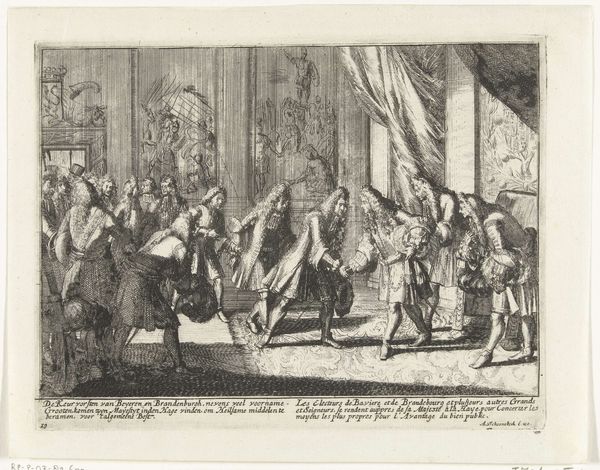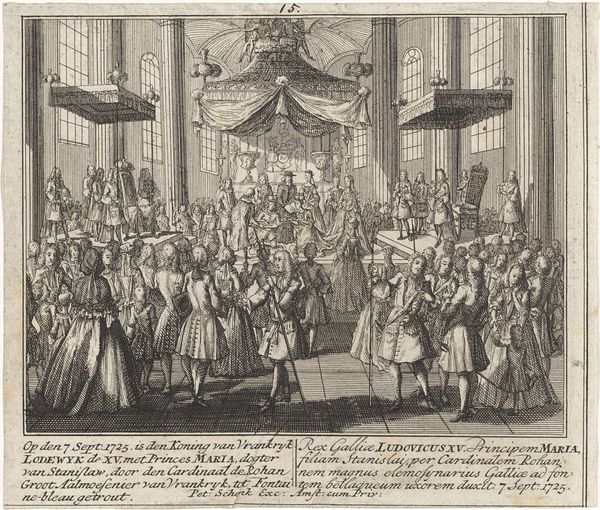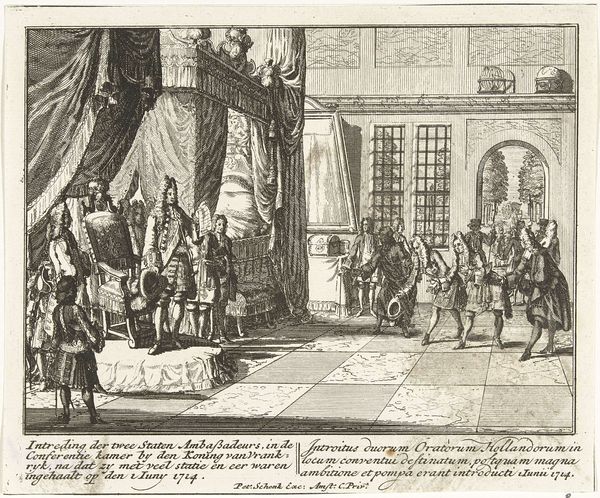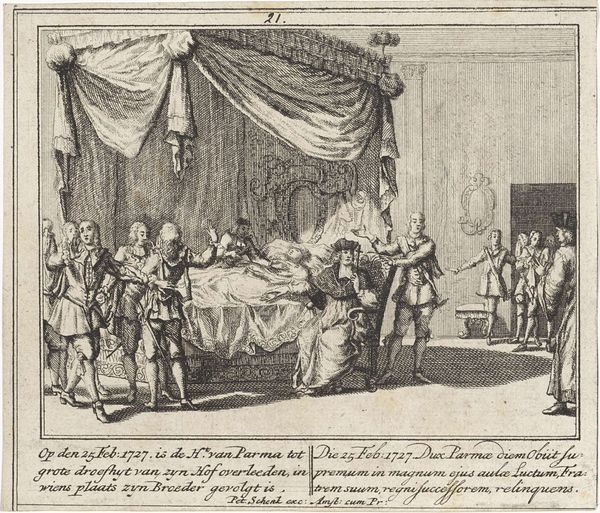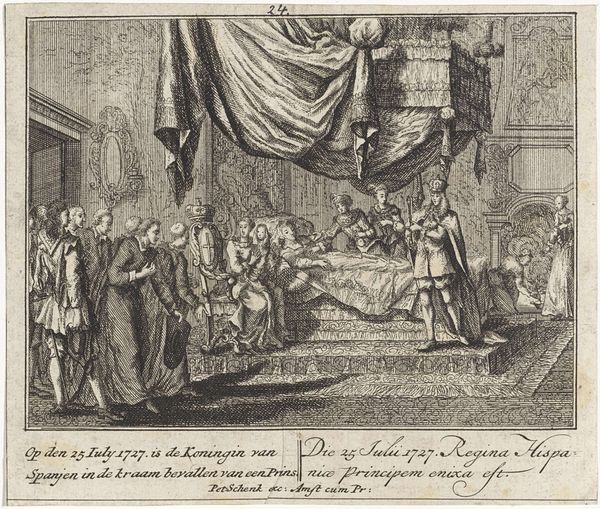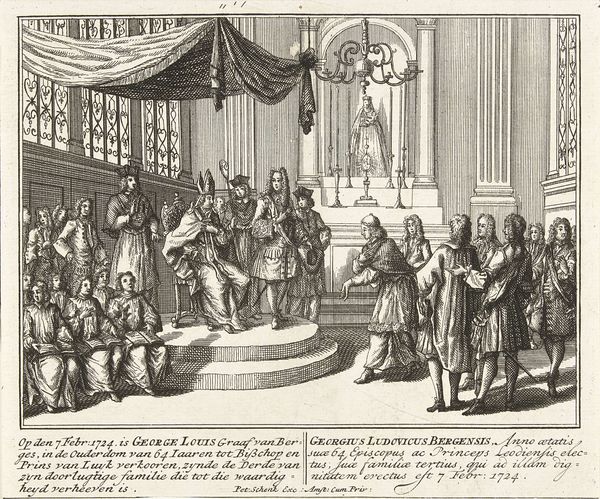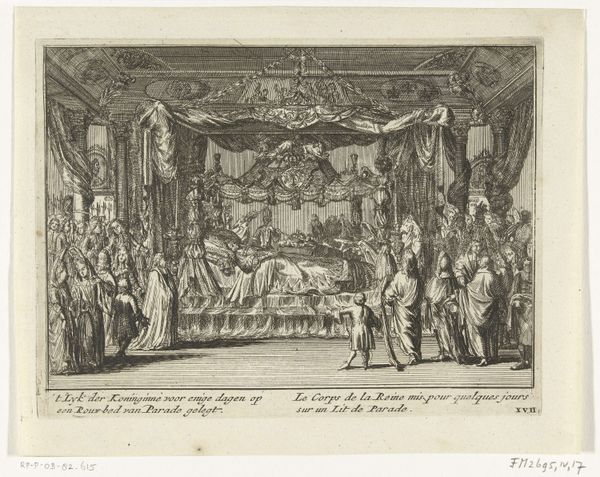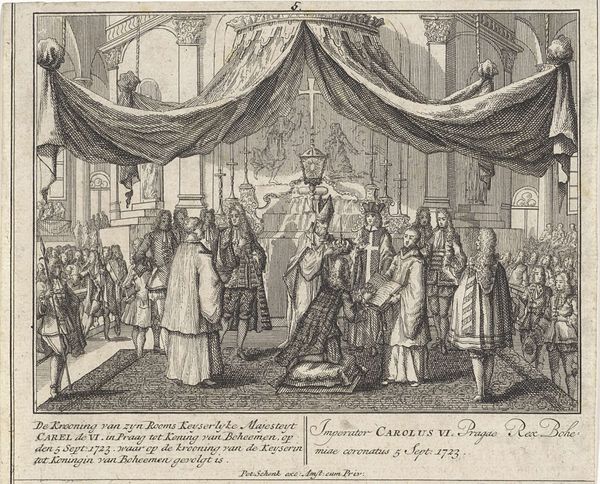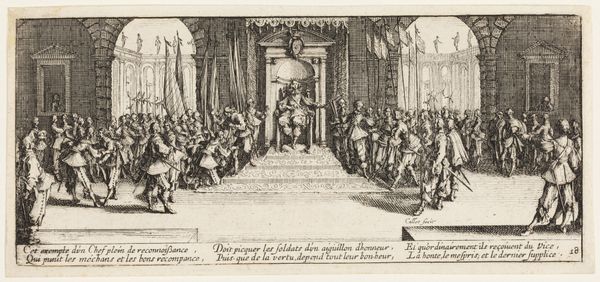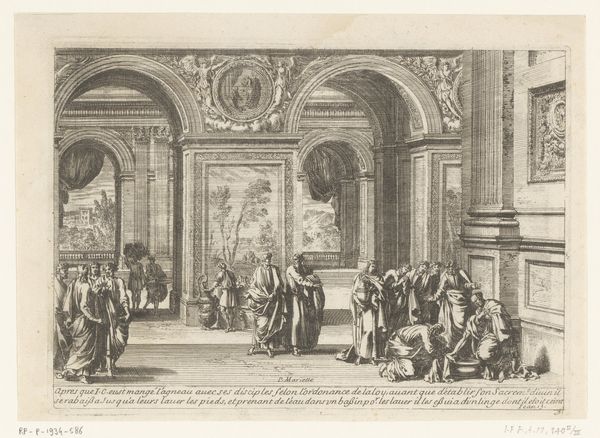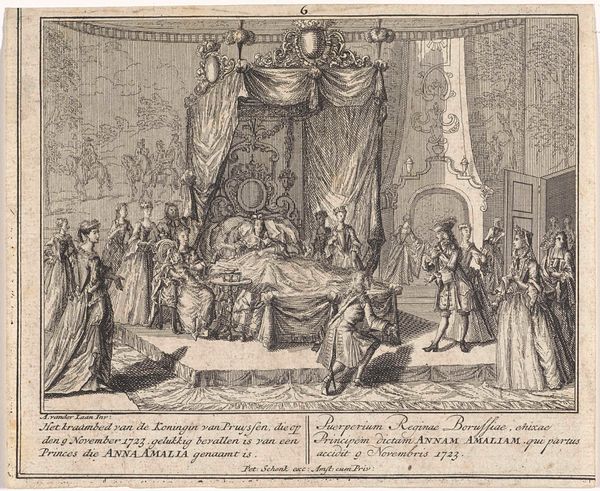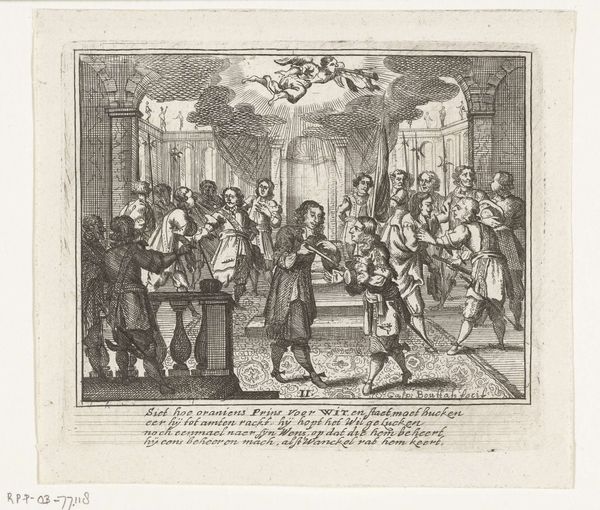
Troonsafstand van Filips V ten behoeve van zijn zoon Lodewijk I 1727
0:00
0:00
leonardschenk
Rijksmuseum
print, intaglio, engraving
#
narrative-art
#
baroque
# print
#
intaglio
#
old engraving style
#
figuration
#
history-painting
#
engraving
Dimensions: height 160 mm, width 190 mm
Copyright: Rijks Museum: Open Domain
Leonard Schenk created this print of the abdication of Philip V of Spain in 1724. The image depicts a pivotal moment in European dynastic politics, but how does it reflect the broader social and institutional context of its time? The print’s visual codes are steeped in the iconography of monarchy: the ornate throne, the kneeling successor, and the solemn assembly of courtiers, all rendered in the precise lines of engraving. Made in the Netherlands, a republic forged through resistance to Spanish rule, this image engages with the spectacle of monarchy from a distance. It invites the viewer to consider not just the event, but the very nature of power and its transfer. The Dutch Republic, with its own complex systems of governance, often used prints to dissect and comment on European power dynamics. This print then is more than a record; it’s a statement about the shifting sands of authority in an age of empires. To fully understand its nuances, we can look to period pamphlets, diplomatic correspondence, and the graphic traditions of the Dutch Republic. Art like this reminds us that its meaning is always contingent on its cultural and institutional surroundings.
Comments
No comments
Be the first to comment and join the conversation on the ultimate creative platform.
